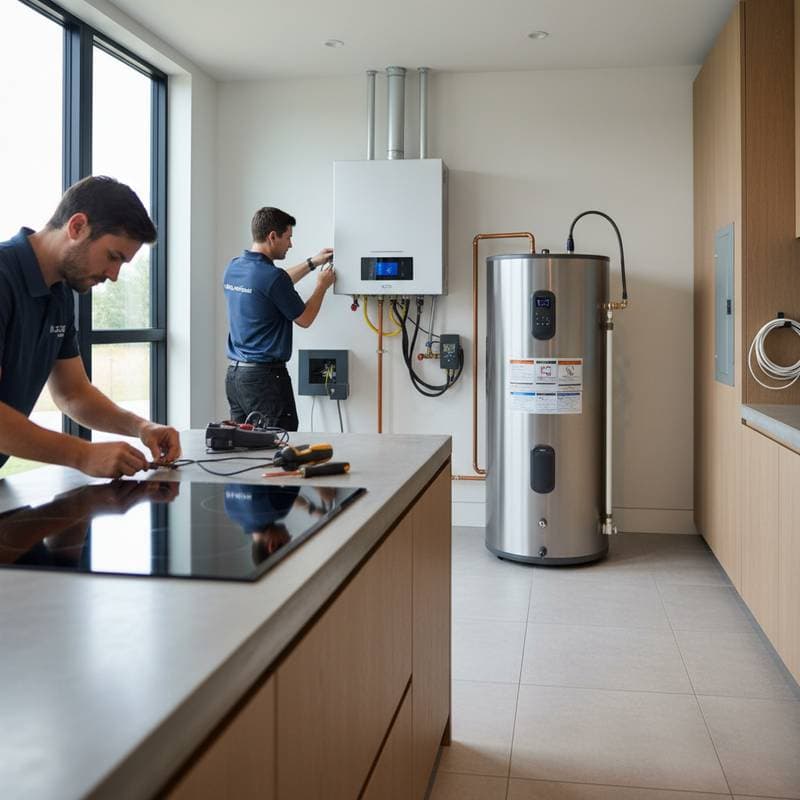Key Points
- Federal tax credits introduced in 2025 enhance accessibility to high-efficiency HVAC systems for homeowners.
- Installation of qualifying systems lowers initial expenses and decreases ongoing utility costs.
- Thorough planning and precise documentation enable homeowners to secure the full credit amount.
- Integration of tax benefits with energy reductions produces significant investment returns.
Balancing Comfort and Expenses
Homeowners frequently encounter the frustration of HVAC systems that consume excessive energy and elevate utility expenses. This issue persists across diverse climates, from humid coastal areas to arid northern regions, where effective performance directly influences indoor comfort. High-efficiency alternatives often appear prohibitively expensive during periods of financial constraint. Recent federal tax credits alter this dynamic, positioning energy-efficient upgrades as a prudent financial choice that supports sustainable living.
Significance of Government Incentives
These incentives aim to expedite the adoption of energy-efficient residential technologies. They establish a clear connection between ecological stewardship and individual economic advantages. Homeowners who select qualifying HVAC equipment may deduct a portion of installation expenses via tax credits, thereby reducing the net cost of the project.
In concrete applications, such credits diminish system expenses by several hundred to thousands of dollars, contingent upon the equipment category and its efficiency metrics. For numerous families, this adjustment determines whether to install a standard replacement or advance to a superior model that enhances comfort and minimizes future operational expenses.
Eligibility Criteria for Systems
Only HVAC systems achieving specific efficiency benchmarks qualify for these credits. Eligible categories encompass the following:
- Heat Pumps: Air-source or ground-source variants featuring elevated seasonal energy efficiency ratios (SEER) and heating seasonal performance factors (HSPF).
- High-Efficiency Furnaces: Models that attain or surpass stringent fuel utilization efficiency requirements.
- Central Air Conditioners: Units validated through established energy performance certifications.
- Smart Thermostats and Controls: Certain devices qualify when incorporated into comprehensive system enhancements.
Equipment manufacturers typically supply certification documents to confirm compliance. Homeowners must preserve these alongside installation records for submission during tax preparation.
Investment Returns and Cost Breakdown
HVAC improvements generate returns in dual forms: an initial reduction through the tax credit and sustained benefits from lower energy use and increased property value.
Consider a high-efficiency heat pump with an installation cost ranging from $10,000 to $15,000. A thirty percent tax credit on this investment yields a refund of $3,000 to $4,500. Subsequent energy reductions over ten years may surpass the differential cost relative to conventional systems.
Collectively, these elements often produce an annual return on investment between eight and fifteen percent, influenced by household consumption and regional energy prices. This yield compares favorably to conventional financial options, augmented by enhanced reliability and comfort.
Professional Perspectives on Durability
Experts in the field advocate viewing HVAC enhancements as enduring infrastructure investments rather than transient costs. A meticulously engineered and installed system endures for fifteen years or longer with routine upkeep. Throughout its lifespan, efficient operation curtails both expenses and environmental impact.
Specialists in eco-friendly installations highlight compatibility with renewable sources. Pairing a high-efficiency heat pump with solar panels or superior insulation substantially lessens reliance on non-renewable fuels and stabilizes monthly expenditures.
Strategies for Optimal Financial Benefits
To guarantee qualification and peak performance, homeowners should follow these measures:
- Confirm Compliance Prior to Acquisition. Verify that the equipment and accessories satisfy efficiency standards through official certifications.
- Engage Certified Installers. Accurate system sizing and placement ensure optimal function and regulatory adherence.
- Retain Comprehensive Records. Collect receipts, certification forms, and installer bills to substantiate tax credit applications.
- Assess Overall Home Efficiency. Enhance insulation, repair ductwork, and update windows to amplify HVAC effectiveness and energy conservation.
- Seek Tax Expertise. These credits involve particular stipulations; guidance from a tax advisor facilitates precise declarations.
Enhancements to Health and Well-Being
Beyond fiscal and ecological merits, upgrades to high-efficiency HVAC systems yield notable improvements in comfort and health. These systems sustain uniform indoor temperatures and humidity, thereby mitigating allergens and mold proliferation. Options for advanced filtration and ventilation elevate air purity, fostering better health outcomes.
Users commonly note reduced noise levels, improved rest, and minimized temperature variations post-installation. Such enhancements elevate everyday living standards, rendering the expenditure rewarding on multiple levels.
Preparing for Emerging Technologies
Advancements in residential systems favor flexible, interconnected designs that respond to occupant preferences. Selecting efficient HVAC equipment now equips a home for integrations like intelligent energy oversight and localized power networks. Compliance with current standards frequently incorporates provisions for renewable energy linkage and home automation expansions.
Forward-thinking choices maintain property appeal in evolving real estate landscapes, where sustainable attributes garner higher valuations from purchasers and evaluators.
Initiating the Upgrade Process
Commence with a professional energy audit to pinpoint inefficiencies, explore compliant options, and obtain estimates from reputable contractors.
Post-installation, schedule regular maintenance including seasonal inspections and filter replacements to sustain efficiency. Monitor utility usage to quantify reductions and record system advancements.
Current tax provisions, heightened energy consciousness, and technological progress converge to present an opportune time for efficient HVAC investments. Partial or full system replacements deliver measurable financial and planetary advantages, transforming necessity into strategic enhancement.










